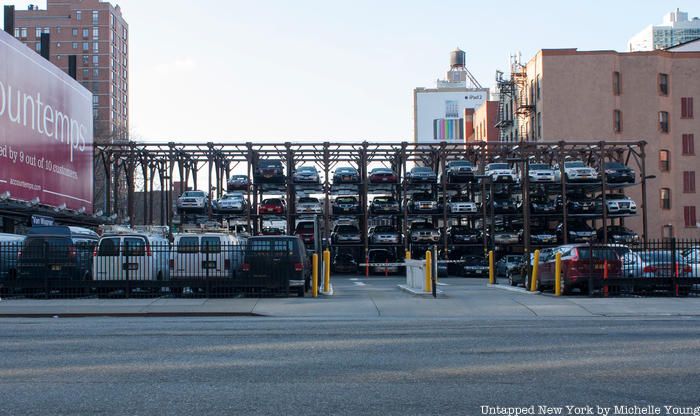Last Chance to Catch NYC's Holiday Notalgia Train
We met the voices of the NYC subway on our nostalgia ride this weekend!


Parking your car in New York City can be a herculean task, particularly in the densest borough, Manhattan. Since the early 20th century, inventors have been bent on finding a way to maximize space in parking lots. In 1941, patent filed by O. A. Light, made it possible to stack three cars on top of each other. It was based on the schematic of an earlier patent filed in New York City by Max Miller which used hydraulic lifts to raise cars, leaving a roadway unobstructed. With the automobile boom of the middle of the last century came a boom in creative and automated ways to park them. But is it safe to park your car there?

The lifts work in a very simple way. The parking attendant drives a car into an open slot in the stacks, and raises it to the top. In order to, for example, remove the top car, the attendant must first remove each car beneath it. The NYC Office of Technical Certification and Research puts each of these mechanical parking lifts through a rigorous testing protocol for their safety, as outlined in this bulletin. Here are some of the requirements for each lift:

Stacked automated parking lifts are also useful for the rich car enthusiast with many cars. Newer lifts are much more automated, allowing for more cars to be parked even closer together, as the hydraulic lifts organize and retrieve the cars parked within. In 2013 in Van Nuys, California, the new establishment of a residential automated parking system broke ground, giving a futuristic spin on the stacked parking lots in the streets of New York City. Check it out:
Follow our Cities 101 series to figure out how stuff works in the city.
Subscribe to our newsletter